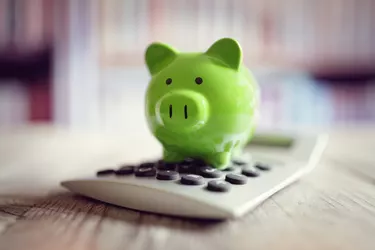With so many different investment options out there, it can be hard to tell which ones are doing well and which ones have been underperforming. To monitor how your investments are doing, you can use the realized return formula, which takes into account the total amount of gain or loss you incurred from holding the investment. Knowing how your investments are performing can help you make better decisions going forward.

Video of the Day
Calculate Realized Return
The return you realize from an investment actually has two components: the increase or decrease in the price of the investment and any income you receive while you own the investment. For example, a stock might pay quarterly dividends to shareholders, or a bond might make quarterly interest payments. If you neglect to include the income portion, you could be undervaluing the performance of your dividend-paying stocks or income-bearing bonds.
Video of the Day
To calculate the realized return, subtract the beginning price from the ending price to calculate the increase or decrease in the value of the investment. Then, add any income paid to you during your ownership of the investment.
For example, say you purchase a stock at the beginning of the year for $50 and at the end of the year you sell it when it is worth $49, but it paid $1 every quarter in dividends. Subtract the beginning price of $50 from the ending price of $49 to find that you lost $1 on the value. But, then add the $4 of dividends to find that your realized return on the investment was actually $3. If you had ignored the income component, you would have mistakenly thought you lost money on the investment.
Realized Return as a Percentage
Calculating your realized return as a dollar figure is useful, but it doesn't allow you to compare the relative performance of investments of different sizes. For example, a $500 return might sound great, but it's a lot better if you only had to invest $1,000 than if you had to invest $100,000.
To calculate your realized return as a percentage, divide the amount of your realized return by your initial investment. Then, multiply the result by 100 to convert the decimal to a percentage. For example, if you realized a $3 return on a $50 investment, divide $3 by $50 to get 0.06. Then, multiply 0.06 by 100 to find that you realized a return of 6 percent on your investment.